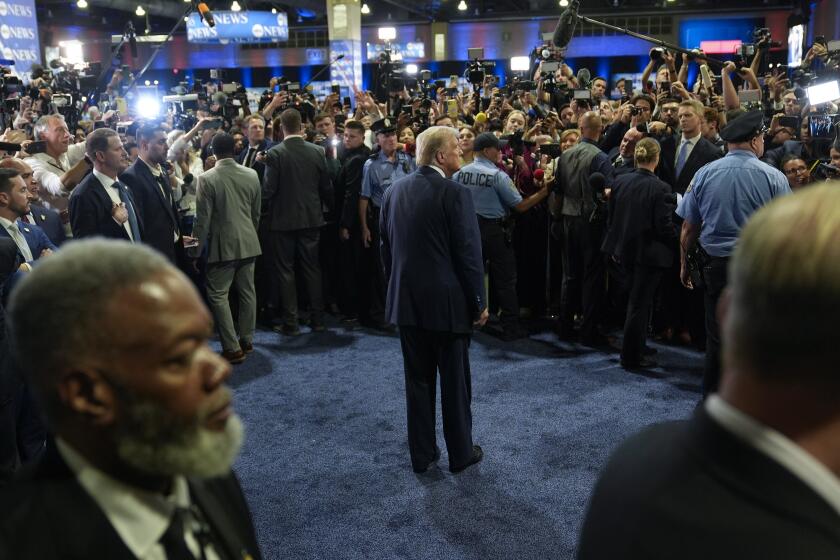American Military Readiness in Post-Iraq Era: It’s a Stretch
When President Bush released his National Security Strategy in September 2002, many hailed it as an important break from the excessively passive and reactive foreign policy of President Clinton. The Clinton administration engaged in military activity erratically, responding belatedly or ineffectively to ethnic cleansing in Kosovo, to Al Qaeda’s bombings of U.S. embassies, to evidence of North Korean nuclear activity and to Saddam Hussein’s ousting of weapons inspectors from Iraq. Clinton’s policies, his critics have argued, paved the way for our current crises: terrorism, Iraq and nuclear proliferation.
Bush’s doctrine, in contrast, calls for preemptive military action whenever necessary to prevent the U.S.’ enemies from harming us or our allies. It emphasizes that the U.S. must shape an international environment that serves our interests. “We cannot defend America and our friends by hoping for the best,” Bush said in a speech at West Point. “In the new world we have entered, the only path to peace and security is the path of action.”
It is a sound strategy, but it’s beginning to look like it might not survive Operation Iraqi Freedom. The American armed forces today are too small in number to support such an ambitious policy.
Bush’s decision to invade Iraq followed the principles articulated in his National Security Strategy of using force proactively to advance U.S. grand strategic goals. But because the administration refused to expand the armed forces to a level adequate to support this strategy, our troop commitments in Iraq will force the U.S. to adopt a more Clintonesque, reactive approach elsewhere in the world.
In 2003, nearly three-quarters of the active Army’s combat brigades and one-third of the National Guard’s brigades were deployed abroad. Portions of a Marine Expeditionary Force remain in or near Iraq. All this leaves the U.S. with only a small strategic reserve to meet emerging threats. The slowness and slightness of our commitment to Liberia demonstrate the lack of strategic flexibility our current deployment has produced. Our ability to navigate the North Korea situation could also suffer.
Defense Secretary Donald H. Rumsfeld is moving at a glacial pace in considering plans to increase the size of our fighting force. Perhaps he sees the Iraq war as only a temporary blip and expects conditions to improve there by next year, thereby eliminating the need for a larger military. But in the end, as Gen. Peter J. Schoomaker, the new Army chief of staff, has told Congress, we need to increase the number of troops at our disposal.
The constraining effects of the Iraq war on foreign policy will continue for another year at least, even as divisions are rotated out of Iraq. Units leaving there cannot be instantly deployed elsewhere. They will need to retrain for combat after a year of peacekeeping. They will need to repair their equipment. And the soldiers will need some leave after a year in a war zone. Normally, Army units take six months to reconstitute after deployment, and another six months to retrain. Even if this schedule were accelerated, units that leave Iraq next spring would need at least six months to be ready for combat again. All of which means that the U.S. would have little ability to engage in a proactive foreign policy, or even to react militarily to potential threats like North Korea, until at least a year from now.
And that’s if everything goes well. A number of optimistic assumptions underlie the Pentagon’s unit rotation plan. The plan assumes that peacekeeping in Iraq will require substantially fewer troops by March 2004, which seems optimistic given the scale of the insurgency that our forces now face. It predicts that the Iraqis will take over protecting civilians and infrastructure, although the Iraqis are only now being recruited and trained in substantial numbers. It relies on an as- yet-unidentified multinational division to relieve the 101st Airborne Division in February and March. And the plan presupposes that Afghanistan will require no more troops than it does now.
The new unit rotation schedule is not only optimistic, it also reveals deep weaknesses in the U.S. military structure. All of our Army “rapid reaction” forces, designated to respond quickly to crises, are deeply committed to existing missions -- the 82nd Airborne Division will not have a free, deployable brigade until January, the 101st Airborne is committed until March and the 173rd Airborne Brigade until April. Because they will have to retrain when they return to the U.S., we will have no rapid reaction brigade until February at the earliest.
Our Middle East obligations will soon have to draw on forces earmarked for South Korea. Two brigades normally designated permanently as reserves for Korea will instead be sent this fall and winter to Iraq and Afghanistan respectively. If the North Koreans have in the past been deterred from invading the South by our forces there, they may now have reason to rethink the degree of risk they face.
If things heat up on the Korean peninsula, we will not be able to count on sending in the National Guard, either. For the next year or so, the National Guard will supply two more brigades and a battalion to peacekeeping missions in Bosnia, Kosovo and the Sinai Peninsula and two more brigades to relieve units now in Iraq. More than half of the Guard’s battalions will have been deployed on long-term missions in 2003 or 2004.
Pulling back from global commitments is not the answer. Now is not the time to create opportunities for our enemies to harm us and our interests. The events of Sept. 11 demonstrated the price of passivity in international affairs. It’s in our national interest that we oversee a successful transition to a peaceful, democratic Iraq; that we remain in Bosnia, in Kosovo and in Afghanistan to establish democracies; and that we remain in the Korean peninsula to deter proliferation.
The only permanent solution to our current overcommitment is to expand the armed forces so that America is capable of fulfilling all of the responsibilities a superpower faces. If we fail to do so, we will not only abandon “the path of action.” We will once again have to adopt a defense policy of “hoping for the best.”
More to Read
Get the L.A. Times Politics newsletter
Deeply reported insights into legislation, politics and policy from Sacramento, Washington and beyond. In your inbox three times per week.
You may occasionally receive promotional content from the Los Angeles Times.










